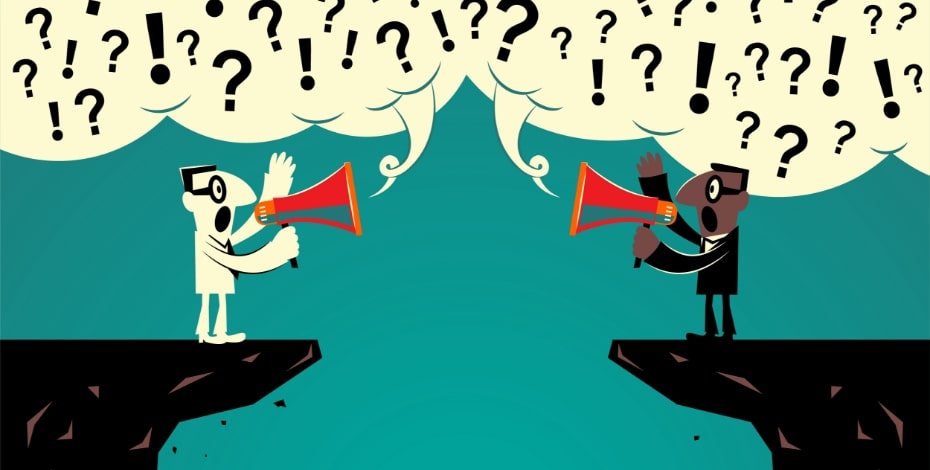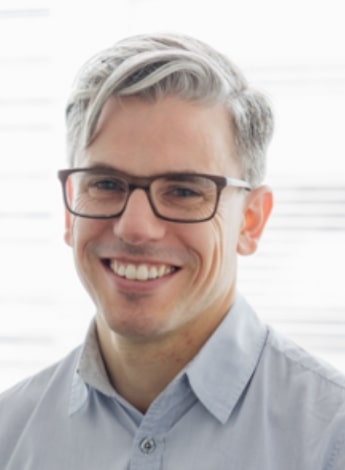
The art of communication

Actor Kate Hood discusses disability and communication with physiotherapist Stephanie Athanasis and clinic director Eyal Bernard.
For more than 20 years, Kate Hood was an able-bodied actor, writer and director, best known for her role as Kath Maxwell in the cult television series Prisoner.
At the age of 42 she was diagnosed with hereditary spastic paraplegia.
Knowing she needed mobility assistance, Kate conducted extensive research and consulted friends with disability to help her find the right physiotherapist.
Here, Kate engages in a roundtable discussion with Stephanie Athanasis, APAM, from Bespoke Physiotherapy and Eyal Bernard, APAM, director of the Melbourne-based clinic, about the importance of communication in disability.
Lose the attitude
Kate Hood: Physiotherapy is all about keeping myself going in my professional and personal life.
I’ve got to have it.
Missing a session has an absolutely profound effect on my ability to do simple tasks, to live in the world as a human being.
For me, it’s about equity.
One of the most challenging changes in my life has not been to my body—it’s people’s attitudes to me now that I’m a wheelchair user.

Actor Kate Hood finds other people's attitudes to be one of the most challenging aspects of living with disability.
People often think that I have an intellectual disability because I’m in a wheelchair.
And that applies to everyone—even people in the medical profession, including physios.
I can tell by the way they speak to me.
I loathe it when people make assumptions about me.
But my relationship with Steph is one where assumptions are not made and that is really helpful.
Steph Athanasis: Not making assumptions is a big thing.
With Kate, we’ve done a lot of our physiotherapy work online this year, so I’ve had to be more creative, demonstrating and using other types of communication to help facilitate her safety and so she could continue her exercises and maintain her independence.
Eyal Bernard: Whenever we have a new client, we see them as a person functionally and our responsibility is to understand what their needs are.
As a provider of health and wellbeing, how do we facilitate that?
How do we progress that person’s goal in the most meaningful way?
Our responsibility is to have a relationship with that person and align their desires and goals to the best practitioner for that individual.
Mind your language
Eyal: Good relationships stem from good communication.
I’ve had a client email me before their appointment, saying, ‘I have issues with my language so I would appreciate it if you can allow me the time to process the communication that you’re providing.’
As a clinician, it’s really helpful for us.
I don’t think that happens enough, where people with a disability are empowered to do that.
We don’t allow people to be themselves with their disability or give them the credit of understanding what their needs are.
Society in general superimposes that, which is a big problem.
Kate: Language is really important.
Being called wheelchair bound by a medical professional makes me very angry because I’m not bound by my wheelchair.
I’m freed by my wheelchair.
If I didn’t have my wheelchair, I would not be able to work, go down the street for a cup of coffee or socialise with people.
I would be isolated in my house and have people tending to me when they thought I needed them, not when I actually needed them.
It’s equally important to be open and honest.
I often ask Steph not to use the ‘we’ word: ‘We need to do this. We need to go back to the chair.’
I’m much more comfortable being spoken to directly: ‘Kate, you need to do this.’
Steph: When you study, you do learn different forms of communication, but it’s never really specified or separated into able-bodied and disabled communication styles.
It’s something you learn on the job.
I did my last placement with Bespoke Physiotherapy, so I learnt about all of those different styles of communication, different kinds of clients and how we might change communication to suit them.
We’re never completely qualified.
We always want to learn more and improve ourselves.
So it’s a matter of continually reflecting on how you’re communicating, what you’re doing, what the client wants and how you can best achieve their goals with them.
More than words
Steph: Our communication styles are different depending on our clients.
What works for some people might not work for somebody else, so that was a bit of a learning curve with Kate.

Physiotherapist Stephanie Athanasis regularly engages in self-reflection as a practitioner, including on communication style.
Obviously, clients are not going to want to keep working with you if you’re continuing to talk to them in a way that they’re not happy with.
And it goes beyond verbal communication.
If they are in a wheelchair, make sure that you’re at eye level with them so that you’re not talking down to them.
You don’t want to make them feel belittled or disempowered.
Eyal: Another area of communication is creating a clinic that is not medicalised.
When the client walks through our door, it’s not a linoleum floor; it’s a considered space that feels friendly and inviting.
We want to give clients not only a level of peace and tranquillity, but also motivation to actually start their journey.
That is communicated to them from the moment they step through the door.
Kate: I’ve actually been to a medical specialist who did not have access—no ramp and no accessible toilet.
A medical professional!
I don’t understand why the world is not completely accessible.
Access is everything to me and it dictates everything about my life.
Listen up
Steph: I try to do a bit of self-reflection at the end of the week and think about who I’ve seen, what worked well and what didn’t.
Communication style is definitely a point of reflection.
I think it’s about figuring out what you’re doing well and what you need to work on and then seeking information to try to improve yourself in that specific area.

It is important to clinic director Eyal Bernard to listen to clients and provide a welcoming environment.
Eyal: You cannot categorise someone because of their disability or how they’re labelled with their disability.
Fundamentally, you have to listen to your clients.
The best way to provide a client with what they need is to listen and listening takes time.
Kate: There is a diversity of disability and therefore a diversity of lived experience.
So there is no ‘one size fits all’ solution to communication.
Eyal has it right when he says physios have to listen and listening takes time.
Sometimes taking that necessary time might blow out the appointment, but it’s magic for us when it happens because suddenly we know we are welcome, that the space is safe.
Steph: I think the seemingly simple task is to be able to communicate effectively with someone regardless of their physical capacity.
It’s a matter of taking time, listening and getting to know them as a person rather than just seeing them as someone we can help physically.
Kate: Being recognised for all of the person that I am is about what I want as well as what I need.
Disabled people have the lived experience; we live with our disability 24 hours a day, seven days a week, 365 days a year.
So we know what’s going on for us.
And often the conversations I have with Steph are about that because the most important thing for me is to be able to live in the world completely independently.
I want to keep that going for as long as possible.
Get comfortable being uncomfortable
Kate: Don’t be frightened.
There is such a disconnect between non-disabled people and disabled people.
I call it the aversion of gaze and it happens everywhere in life generally, but within the medical profession too.
They look at us as a bunch of symptoms only and we’re not just a bunch of symptoms—we’re people.

Kate says that she is freed by her wheelchair, not bound by it.
The most difficult thing to do with a person with a disability is to sit with your discomfort, ride through it and say to the person, ‘I am really uncomfortable right now.
'Can you help me out?
'How can I best communicate with you?’
Eyal: We’ve always predicated our business on the idea that you need to provide bespoke treatment.
It’s about establishing a relationship with someone so they feel empowered by what you’re providing and, more importantly, they feel safe and comfortable.
The ability to then break down barriers is so much easier for them and for us as treating clinicians.
Steph: Regardless of whether they’re able-bodied or disabled, it’s really just a matter of listening to your client and also giving them time to process.
Fatigue and cognitive effects of neurological conditions can be significant and they might take a little bit longer to understand things or to formulate their response.
Sometimes that takes a little more time as well.
But it’s really just being able to pick up the cues—whether they’ve come in and they’re really anxious about something or they haven’t had a good sleep—and being able to tailor communication and the treatment to suit that particular point in time.
Kate: Everyone should have a Disability Action Plan.
A Disability Action Plan is a great way of sharing with everybody in your organisation what disability is.
It allows you to ask questions and find out what the effects of disability are.
The barriers put in place by non-disabled people for disabled people, including attitudinal barriers, affect us far more than our bodies ever will.
The basis of everything for me is attitudinal barriers and once we get rid of those, we can get rid of all the rest.
Click here to learn more about Disability Action Plans, here for a guide to language about disability and here for more on disability stigma.
© Copyright 2025 by Australian Physiotherapy Association. All rights reserved.





